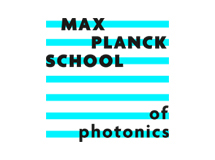Geometrical freedom in glass: laser-manufactured 3D microstructures for complex photonic components
A research team from the Max Planck Institute for the Physics of Light (MPL) has launched the joint project "LAR3S" with the Fraunhofer Institute for Laser Technology ILT and the Fraunhofer Institute for Silicate Research ISC. They want to take a completely new approach to the production of three-dimensional photonic components with lasers. The focus is on selective laser-induced etching and inverse laser drilling. A major goal is to achieve processes and procedures that can be automated to a large extent.


New ideas for the industrial production of microstructures
Glass is a fascinating material: it is transparent and allows processing in volume. The material-penetrating laser radiation enables extensive freedom of geometry in 3D and the processing of a wide variety of transparent materials. The challenge is in the detail: in order to obtain crack- and fracture-free results, precise knowledge of the material properties and machining processes is necessary.
In the project "LAR3S - Laser-generated three-dimensional photonic components", the partners from the three participating institutions want to use their special know-how to develop new technologies for manufacturing 3D structures with lasers.
Laser drilling in glass preforms
Thirty years ago, the idea of producing glass fibres with holes along their entire length was still smiled at incredulously. A team led by Philip Russell, now director emeritus of the MPL, developed a technology for this, in which glass rods or tubes are stacked together and drawn out to length. Today, glass fibres with specific cross-sections can be drawn in this way, also known as the stack-and-draw process. Structured hollow-core fibres can be used, among other things, to transmit very intense laser beams that would destroy solid-core fibres.
With the stack-and-draw method, the structure of the fibres is usually limited to a hexagonal geometry. At the Fraunhofer ILT, a patented process is being further developed with which more complex and thus potentially more advantageous structures can be manufactured completely automatically: inverse laser beam drilling. In this process, the laser beam is focused through a transparent component onto the rear side and moved over the surface to be drilled by means of a scanner. In a sense, the laser drills a hole backwards into the glass. In this way, almost any structures with large aspect ratios can be introduced into the fibre preform, and other transparent materials do not pose a problem either.
In the future, new structures can be calculated on the computer using artificial intelligence and directly implemented with the laser. The Fraunhofer ISC has a key competence in process control: the removal of the ablated residual material from the boreholes. For this purpose, the laser parameters are optimised together with the project partners and physical or chemical methods for process optimisation are developed. The goal is to create structures with customised dispersive properties in fibre preforms over 200 mm long.
3D microstructures by selective laser-induced etching
Another process for micromaterial processing is selective laser-induced etching. In this process, a transparent material is structured crack-free in the volume and on the surfaces with the help of focused ultra-short pulsed laser radiation, thereby changing the chemical properties in such a way that it becomes selectively etchable. By deflecting the focus in the workpiece, contiguous areas are modified. These can be removed in the second process step by wet chemical etching. This two-part process also enables a high degree of geometric freedom.
The project partners want to optimise the process especially for new geometries in the production of laser microresonators. Such sub-millimetre structures can be used, for example, in telecommunications and quantum technology. As couplers, converters or sensors, they enable the further miniaturisation and integration of optical components.
The project "LAR3S - Laser-generated three-dimensional photonic components - Resonant and anti-resonant devices for shaping and guiding light" with a duration of three years is funded within the framework of the Fraunhofer Max Planck Cooperation Programme.
Photo 1 (© MPL): Selective laser-induced etching can be used to manufacture microresona-tors, for example for frequency comb generators. The laser process enables new geometrical shapes.
Photo 2 (© Fraunhofer ILT, Aachen, Germany): In the “LAR3S” project, two institutes from the Fraunhofer-Gesellschaft and one from the Max-Planck-Gesellschaft are working together on processes for manufacturing preforms for hollow-structure fibers with new geometrical shapes.
Contact
Edda Fischer
Head of Communication and Marketing
Phone: +49 (0)9131 7133 805
MPLpresse@mpl.mpg.de





